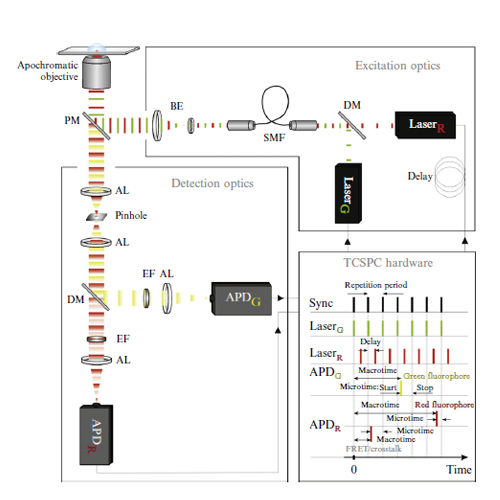Pulsed Interleaved Excitation: Principles and Applications
30-Jun-2013
Methods in Enzymology, 2013, http://dx.doi.org/10.1016/B978-0-12-388422-0.00009-1, Volume 518, Pages 205–243 published on 30.06.2013
Methods in Enzymology, online article
Methods in Enzymology, online article
Pulsed interleaved excitation (PIE) is the methodology of interleaved or alternating excitation of different fluorophores on the nanosecond timescale, which allows quasi-simultaneous, yet independent measurements to be performed. PIE simplifies quantification of several fluorescence techniques such as FCCS and FRET experiments. Foremost, it allows to specifically filter out spectral emission bleedthrough (crosstalk) and direct excitation without a decrease in the signal-to-noise ratio (SNR) of the experiment. Next, PIE allows determination of the absolute FRET efficiency from FCCS experiments in the case of nonperfect labeling. In recent years, PIE has been utilized in many different advanced FFS techniques. Combining MFD with PIE allows highly accurate and species-specific spFRET analyses to be performed. The combination of scanning FFS techniques with PIE combines the best of both techniques and allows for false-positive free measurements of molecular interactions in vitro and in living cells. In succession, a comprehensive overview of the principle and versatility of the PIE technique is discussed, the theory for analysis with PIE is outlined by comparing CW– and PIE–FCCS and finally, some of the most important applications of the PIE technique in literature are reviewed.











